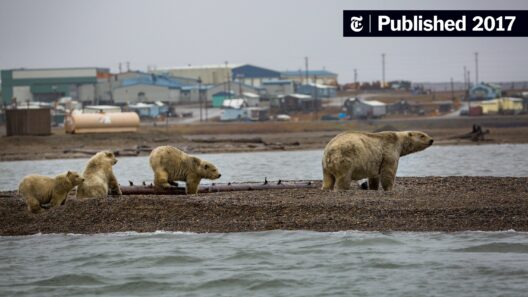Global warming is an increasingly palpable phenomenon, and its repercussions manifest prominently in states like Florida. Known as the Sunshine State, Florida captivates with its idyllic beaches and vibrant ecosystems. However, beneath this facade lies an escalating crisis driven by climate change. As average temperatures rise, Florida faces a plethora of environmental challenges that threaten its natural beauty, economy, and the well-being of its residents.
One of the most alarming outcomes of severe global warming is the rise in sea levels. Various studies predict that by the end of the century, sea levels could rise by as much as three feet, displacing communities and inundating coastal habitats. Florida’s geographical makeup makes it particularly vulnerable due to its extensive coastline and low-lying topography. Key urban centers such as Miami, Tampa, and Jacksonville are at risk of chronic flooding. As saltwater seeps into freshwater aquifers, the drinking water supply could be compromised, leading to disastrous public health implications.
Furthermore, as sea levels rise, so too does the frequency and intensity of hurricanes. Warmer ocean temperatures create the necessary conditions for more potent storm systems. Florida has experienced an uptick in hurricane strength over the past few decades, with devastating storms like Hurricane Irma and Hurricane Dorian showcasing this trend. These storms not only pose immediate threats through high winds and rain but also have long-term effects on infrastructure. Repairing roads, bridges, and essential services in the aftermath of such disasters is a Herculean task, often leading to increased insurance premiums and economic instability.
The threat of increasingly severe hurricanes interlinks with another pressing concern: the loss of biodiversity. Florida is home to a rich tapestry of ecosystems, including the Everglades, a unique wetland that supports myriad species. Rising temperatures and erratic precipitation patterns disrupt these delicate ecosystems. Species that rely on specific temperature ranges for breeding or feeding face existential threats. Coral reefs, which thrive in stable temperature conditions, experience bleaching and mortality, leading to the dissolution of marine biodiversity. Such losses reverberate through the ecosystem, affecting adults and juveniles alike as the intricate web of life unravels.
Drought conditions are another facet of the changing climate that will have pronounced implications for Florida. While hurricanes can saturate the region, rising temperatures can lead to prolonged dry seasons. Drought not only exacerbates water shortages but also challenges agriculture—a linchpin of Florida’s economy. Citrus groves and vegetable farms struggle to survive under unpredictable weather, leading to potential food supply issues. As crop yields diminish, farmers face financial ruin, and consumers see a rise in food prices. The economic ramifications of drought extend beyond agriculture; sectors dependent on natural resources and tourism may also experience a downturn.
Moreover, public health risks intensify due to global warming. As temperatures rise, heat-related illnesses increase. Vulnerable populations, especially the elderly and those with preexisting health conditions, face heightened risks. Moreover, vector-borne diseases, such as Zika and dengue fever, could spread more easily as warmer climates facilitate the proliferation of disease-carrying mosquitoes. The strain on healthcare systems is inevitable. Florida must prepare for heightened public health protests as the climate crisis continues to evolve.
So, what actions might Florida undertake to mitigate these severe risks? For one, investing in sustainable infrastructure is crucial. Strengthening flood defenses through innovative engineering could help coastal areas withstand rising seas. Enhancing stormwater management systems to better handle intense rainfall is also essential. Transitioning to renewable energy sources could address greenhouse gas emissions, mitigating one of the root causes of climate change.
Florida can further promote conservation initiatives aimed at safeguarding critical ecosystems. The preservation of wetlands not only supports biodiversity but also functions as a natural buffer against storm surges, mitigating flooding risks. Additionally, reforesting areas, particularly in regions vulnerable to wildfires, can help sequester carbon and restore ecological balance.
Public awareness plays an equally vital role in addressing climate change. Education campaigns elucidating the ramifications of global warming can spur community engagement. Grassroots initiatives can empower residents to advocate for sustainable practices, from reducing waste to supporting local agriculture. By fostering a culture of environmental stewardship, Florida can cultivate a resilient populace prepared to tackle impending climate challenges.
Moreover, collaboration at the state and national levels is indispensable. Policymakers must engage with scientists to develop evidence-based climate action plans. Such measures could include taxation incentives for renewable energy usage, stricter regulations on emissions, and funding for climate research to monitor and predict changes in the environment.
The Sunshine State is at a crossroads. While its picturesque landscapes captivate, the looming specter of severe global warming presents formidable challenges. Rising sea levels, intensified hurricanes, biodiversity loss, drought, and public health threats each contribute to an intricate web of risk facing Florida. The time to act is now. Fostering resilience through dedication to sustainability, education, and adaptation could guide Florida toward a more secure future. Embracing these changes is not just a necessity; it is an obligation to ensure that the beauty and richness of Florida can be sustained for generations to come.







